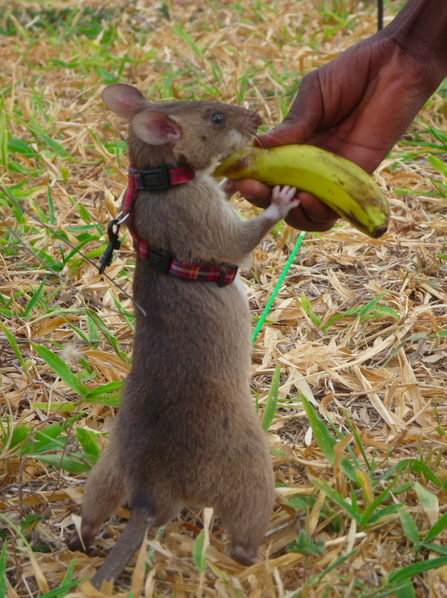Hero Rats
As a young child, Bart Weetjens had two passions: rodents and Africa. Both interests are a bit odd — the one of rodents self-explanatory, but the interest in Africa strange because Weetjens was born and raised in Belgium. As he entered adulthood, he became an industrial engineer. Here, his first passion came into play, as he focused on products aimed at developing countries. In time, he’d quit that job — it was focusing on consumer goods — and instead turned his attention to another: land mines.
And for a solution, he looked to his other passion. In this case, he settled on giant rats.
As Weetjens notes, rats are extremely sensitive to smell — something he learned at a young age while feeding his curiosity about rodents. Using Pavlovian methods, Weetjens’ organization, APOPO (which is an acronym for the Dutch equivalent of “Anti-Personnel Landmines Detection Product Development”) trained African giant pouched rats to sniff out landmines. Because this species of rat is endemic to the areas APOPO assists, it is easy to find candidates to act as living landmine detectors — and it is also easy to keep them alive, because they have built-in immunities from diseases prevalent in the area. And while big for rats, the African giant pouched rat is still small — so small, in fact, that when they walk over a landmine, they do so without exerting the requisite pressure to trigger its explosion.
Now termed HeroRATs, the rodents are rewarded for a job well done with a banana (seen above), further reinforcing their training and efforts. And they are doing a fantastic job: since the program started in 2003, in Mozambique alone, these rats have discovered over 1,500 landmines, leading to the mines’ destruction and the reclamation of over 2.5 million square miles of land.
Weetjens’ next rat-driven target? Tuberculosis. Using the same principles — rats can identify a scent which is unique to TB, and identify TB-positive patients — Weetjens believes that the detection of the disease can be done cheaper and faster. As he stated in a TED talk (video here), a clinician using a microscope can go through 40 samples in a day, while one of his trained rats can get through that same amount in roughly seven minutes — no microscope required. And to date, it has been very successful, increasing TB detection by over 43% in partnered hospitals in Tanzania.
Bonus fact: As seen in this video, rats laugh when tickled.
From the Archives: Losing the Rat Race: Rats versus the drug lords.
Related: “Rats: Observations on the History and Habitat of the City’s Most Unwanted Inhabitants,” by Robert Sullivan. (Yep, a book about New York City’s rats.) Four stars on average across 64 reviews. $10.88 (paperback) or $9.99 (Kindle).

